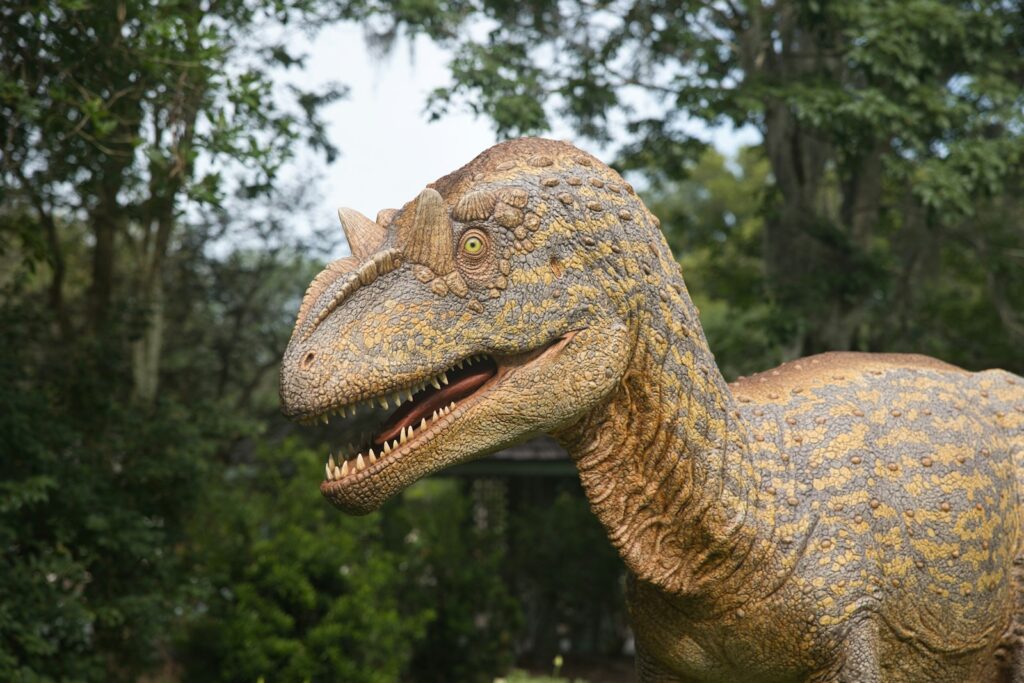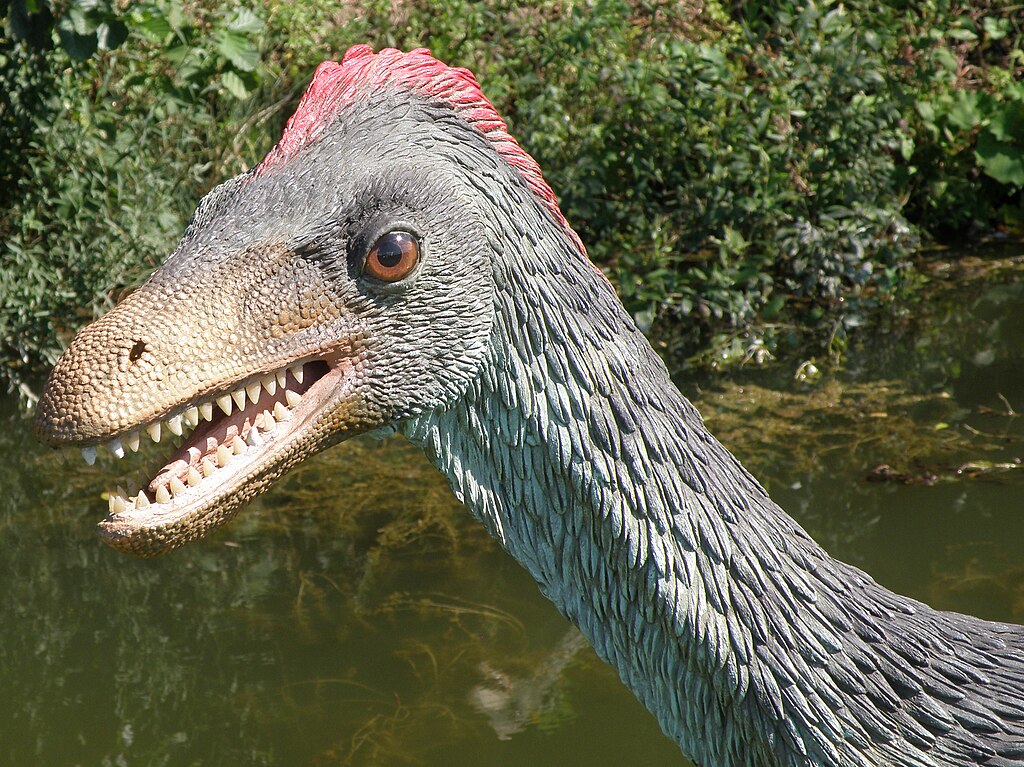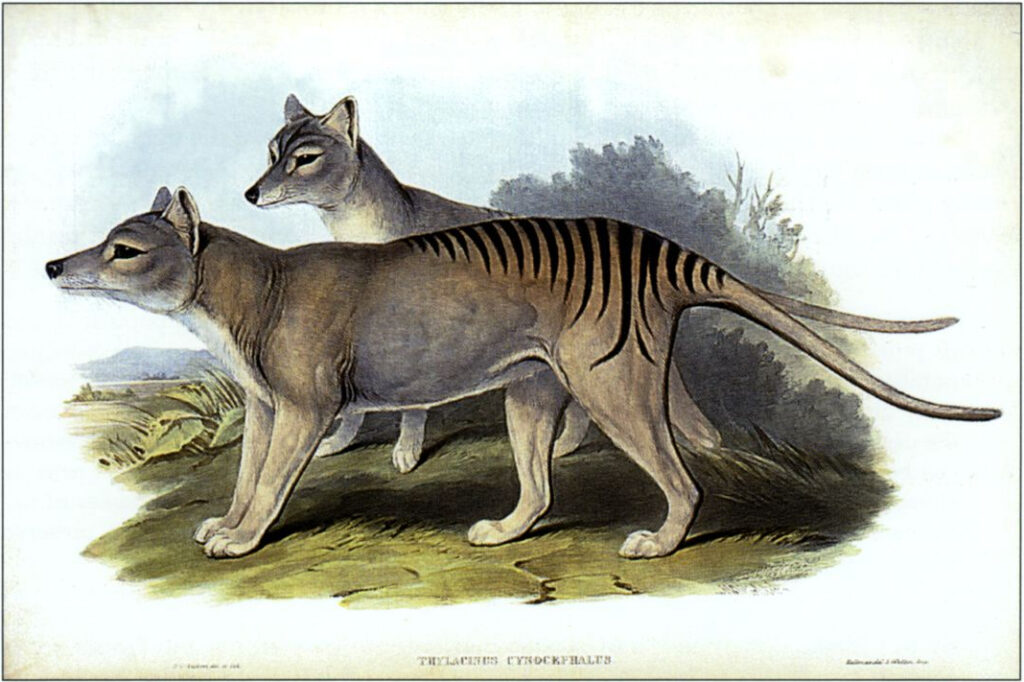In the century-plus history of cinema, few subjects have captivated audiences quite like dinosaurs. These prehistoric giants have stomped across our screens in various forms, from stop-motion clay models to state-of-the-art computer-generated imagery. While many dinosaur films prioritize spectacle over science, a select few have made remarkable efforts to accurately portray these ancient creatures based on the best paleontological knowledge available at their time. This article explores the most scientifically accurate and realistic dinosaur portrayals in film history, examining how filmmakers have balanced entertainment value with paleontological authenticity.
Jurassic Park (1993): The Revolutionary Game-Changer

When Steven Spielberg’s adaptation of Michael Crichton’s novel hit theaters in 1993, it fundamentally transformed how dinosaurs were depicted on screen. Working closely with paleontologist Jack Horner, the film incorporated cutting-edge scientific theories of the time, including the revolutionary concept that some dinosaurs were warm-blooded, active animals rather than sluggish reptiles. The Velociraptors, though oversized compared to their real counterparts, helped popularize the theory that dinosaurs were the evolutionary ancestors of birds. The film’s Tyrannosaurus rex remains one of cinema’s most accurate depictions of the species for its era, with the correct posture and proportions. While some scientific inaccuracies exist (like the Dilophosaurus’s neck frill and venom), Jurassic Park deserves immense credit for updating dinosaur portrayals based on contemporary science.
Walking with Dinosaurs (1999): Documentary-Style Precision

Though technically a television series rather than a feature film, BBC’s “Walking with Dinosaurs” deserves mention for its groundbreaking approach to dinosaur realism. Using a nature documentary format, the series portrayed dinosaurs as real animals in their natural habitats rather than movie monsters. The production team consulted multiple paleontologists to ensure scientific accuracy, from the dinosaurs’ appearance to their behaviors and ecosystems. Each episode focused on different periods, showcasing various dinosaur species in their correct geological context. The series was particularly revolutionary for depicting dinosaur behaviors like mating rituals, territorial disputes, and hunting tactics based on fossil evidence and comparative studies with modern animals. When released, “Walking with Dinosaurs” represented the most scientifically rigorous visualization of prehistoric life ever created for a mainstream audience.
Dinosaur (2000): Disney’s Scientific Effort

Disney’s Dinosaur” combined live-action backgrounds with computer-generated dinosaurs to create a visually stunning prehistoric world. The film’s production team conducted extensive research to ensure anatomical accuracy for its dinosaur characters, particularly the protagonist Aladar, an Iguanodon. The attention to detail is evident in the careful modeling of muscle movement beneath the skin and the realistic locomotion of different species. While the film takes creative liberties with dinosaur vocalizations and social structures, it correctly portrays the Carnotaurus as a horned predator from the late Cretaceous period with appropriately sized arms and distinctive skull features. The film also accurately depicts other species like Parasaurolophus, Styracosaurus, and Pachyrhinosaurus with their correct anatomical features. Disney’s willingness to prioritize scientific accuracy in a family film represented a significant step forward for dinosaur realism in mainstream entertainment.
Prehistoric Planet (2022): The New Gold Standard

Apple TV+’s Prehistoric Planet, narrated by David Attenborough and produced in collaboration with the BBC Natural History Unit, represents the current pinnacle of dinosaur realism in visual media. This nature documentary-style series incorporates the latest paleontological research to depict dinosaurs with unprecedented accuracy. The Tyrannosaurus rex is portrayed with the correct proportions, likely feathering patterns, and scientifically proposed behaviors such as paternal care for offspring. The series showcases dinosaurs that rarely appear in mainstream media, like the feathered Mononykus and the marine reptile Mosasaurus with its accurate tail fluke. What sets “Prehistoric Planet” apart is its commitment to showing dinosaurs as animals rather than monsters, depicting behaviors like courtship displays, nest-building, and territorial defense based on fossil evidence and analysis of modern analogs. The series consulted over a dozen leading paleontologists to ensure each dinosaur, plant, and environmental detail reflected the most current scientific understanding.
The Good Dinosaur (2015): Stylized Yet Scientifically Informed

Pixar’s “The Good Dinosaur” takes an interesting approach to dinosaur realism, balancing cartoonish character designs with surprisingly accurate dinosaur locomotion and physical capabilities. Despite the anthropomorphized personalities of its dinosaur characters, the film’s animation team studied fossil evidence and modern animal movement to create believable dinosaur physics. The Apatosaurus family moves with the correct quadrupedal gait suggested by fossil trackways, and the Tyrannosaurus rex characters run with the proper horizontal posture indicated by skeletal analysis. The film’s premise—what if dinosaurs hadn’t gone extinct—allowed for creative liberties, but the attention to how these creatures would move and function physically demonstrates a commitment to grounding even fantastical stories in scientific realism. The environmental design also accurately depicts the changing North American landscape of the late Cretaceous period, showing appropriate flora and geological features that would have existed during the dinosaurs’ reign.
The Valley of Gwangi (1969): Ray Harryhausen’s Meticulous Stop-Motion

Long before CGI made dinosaur realism more achievable, visual effects pioneer Ray Harryhausen created remarkably accurate dinosaur models for “The Valley of Gwangi.” Working with limited paleontological knowledge of the 1960s, Harryhausen, nonetheless, crafted dinosaurs with anatomical precision far beyond most contemporaneous films. His Allosaurus (portrayed as the titular Gwangi) featured the correct three-fingered hands, appropriate skull structure, and biomechanically plausible movement based on the scientific understanding of the time. Harryhausen’s stop-motion animation gave his dinosaurs weight and presence that many early CGI efforts would later struggle to match. His attention to detail extended to the Pteranodon and Styracosaurus featured in the film, both of which displayed accurate anatomical proportions relative to the paleontological knowledge available. While modern viewers might notice outdated elements like the upright posture of the Allosaurus, for its era, “The Valley of Gwangi” represented exceptional dinosaur realism.
When Dinosaurs Roamed America (2001): Documentary Precision

This Discovery Channel documentary followed in the footsteps of “Walking with Dinosaurs” but focused specifically on North American dinosaur species throughout different geological periods. The program’s scientific consultants, including paleontologist Thomas Holtz, ensured that each featured dinosaur reflected the most current scientific understanding available in 2001. The documentary was among the first major productions to depict certain theropod dinosaurs with feathers, including a feathered Dromaeosaurus, years before this became widely accepted in mainstream media. “When Dinosaurs Roamed America” also deserves recognition for its accurate portrayal of lesser-known North American dinosaurs like Nothronychus and Zuniceratops, with correct anatomical features and placing them in their proper geological periods. The program’s commitment to showing accurate prehistoric ecosystems, including appropriate plant life for each era, further enhanced its scientific credibility and helped establish new standards for realistic dinosaur documentaries.
Dinosaur 13 (2014): Bringing Sue to Life

While primarily a documentary about the discovery and controversial seizure of the Tyrannosaurus rex specimen nicknamed “Sue,” “Dinosaur 13” includes several scientifically accurate recreations of how this specific T. rex would have appeared and moved based directly on its fossilized remains. What makes these reconstructions particularly notable is their direct correlation to the actual fossil being discussed in the documentary, with paleontological details specific to this individual animal rather than generic representations. The documentary consulted with the original paleontological team that discovered the specimen to ensure an accurate portrayal of Sue’s proportions, likely movement patterns, and physical capabilities based on the fossil evidence. The film’s visualizations reflect the specific pathologies found in Sue’s skeleton, including healed injuries and signs of infection that this particular dinosaur experienced during its life. These carefully researched details make the limited dinosaur recreations in “Dinosaur 13” among the most specimen-specific accurate depictions in any film.
Planet Dinosaur (2011): BBC’s Updated Take

BBC’s “Planet Dinosaur” series represents a significant update to the “Walking with Dinosaurs” formula, incorporating a decade of new paleontological discoveries. The series features numerous dinosaur species rarely seen in mainstream media, like the massive theropod Spinosaurus with its newly discovered semi-aquatic adaptations and sail structure based on fossil evidence published just before production. The documentary’s scientific accuracy extends to its portrayal of feathered dinosaurs, correctly showing various degrees of feathering on different theropod species according to the latest research. One particularly noteworthy aspect is the series’ transparent approach to scientific uncertainty, often presenting multiple interpretations of dinosaur appearances or behaviors when the evidence allows for different possibilities. The documentary also excels in depicting accurate predator-prey relationships and ecological contexts, showing dinosaurs as part of complex ecosystems rather than isolated, spectacular creatures. With its combination of cutting-edge CGI and rigorous scientific consultation, “Planet Dinosaur” stands as one of the most comprehensive and accurate dinosaur documentaries ever created.
Dinotasia (2012): Werner Herzog’s Scientific Vignettes

This unconventional dinosaur film combines scientifically accurate dinosaur recreations with narration by filmmaker Werner Herzog, presenting a series of vignettes depicting life in the Mesozoic Era. What distinguishes “Dinotasia” is its unflinching portrayal of dinosaur behaviors based strictly on fossil evidence, including predation, territorial conflicts, and natural disasters, without anthropomorphizing the animals. The film’s dinosaurs are presented with appropriate feathering based on the scientific consensus of 2012, including fully feathered dromaeosaurs and partially feathered tyrannosaurids. The film draws directly from fossil discoveries, including a sequence based on the famous “fighting dinosaurs” fossil that preserves a Velociraptor and Protoceratops locked in combat at the moment of death. Rather than inventing dramatic narratives, “Dinotasia” builds its stories around actual paleontological evidence, including fossilized trackways, coprolites (fossilized feces), and preserved stomach contents, making it one of the most scientifically grounded dinosaur films despite its artistic presentation.
March of the Dinosaurs (2011): Arctic Adaptations

“March of the Dinosaurs” deserves recognition for its focus on a rarely portrayed aspect of dinosaur life: how these animals survived in polar regions with extreme seasonal light variations. The film accurately depicts the polar dinosaur Edmontosaurus and the troodontid Troodon based on fossil discoveries from Alaska’s North Slope, showing adaptations that would have helped these animals survive in harsh Arctic conditions. The documentary correctly portrays the complex seasonal migrations of polar dinosaurs based on fossil evidence suggesting that some species traveled thousands of miles annually to avoid the darkest winter months. The film’s scientific consultants ensured an accurate portrayal of dinosaur thermoregulation strategies, including the possibility that some species remained active during the polar winter instead of migrating. “March of the Dinosaurs” also excels in depicting correct Cretaceous Arctic environments, showing the appropriate flora and seasonal light patterns rather than generic prehistoric landscapes. This focus on a specialized aspect of dinosaur life, grounded in specific fossil evidence from polar regions, makes the film a uniquely valuable contribution to realistic dinosaur portrayals.
Sea Monsters: A Prehistoric Adventure (2007): Aquatic Accuracy

While not strictly focused on dinosaurs, this National Geographic documentary deserves mention for its scientifically accurate portrayal of the marine reptiles that lived alongside dinosaurs. “Sea Monsters” meticulously recreates aquatic creatures like Dolichorhynchops, Tylosaurus, and Archelon based on fossil evidence and comparative studies with modern marine animals. The film’s attention to detail extends to accurate swimming motions for different marine reptile groups, showing plesiosaurs using their flippers in a “flying” motion through water as suggested by their anatomy, contrasting with the eel-like swimming of mosasaurs. The documentary correctly places these creatures in their appropriate periods and ecological contexts, showing how the Western Interior Seaway that divided North America supported diverse marine ecosystems. The film also accurately portrays the hunting tactics and feeding behaviors of these marine predators based on fossil stomach contents and bite marks found on prey species. By focusing on the less commonly depicted marine contemporaries of dinosaurs with scientific rigor, “Sea Monsters” fills an important gap in realistic prehistoric animal portrayals.
Dinosaurs Alive (2007): Museum Science on Screen

Created specifically for IMAX and giant screen theaters, “Dinosaurs Alive” combines footage of actual paleontological field work with scientifically accurate dinosaur recreations. The film benefits from direct collaboration with the American Museum of Natural History, ensuring that each dinosaur depicted reflects the institution’s research-based understanding. What makes this film particularly valuable from a scientific accuracy standpoint is how it transparently shows the process of reconstructing dinosaur appearances from fossil evidence, demonstrating how scientists move from bones to realistic recreations. The film accurately portrays recent discoveries from the Gobi Desert and New Mexico’s Ghost Ranch, including rarely depicted species like Gigantoraptor and Coelophysis in their correct environmental contexts. “Dinosaurs Alive” also excels in showing the dynamic nature of paleontology as an evolving science, presenting changing interpretations of dinosaur behavior and appearance as new evidence emerges. By connecting modern scientific work directly to dinosaur recreations, the film provides viewers with a clear understanding of the evidence-based foundation behind realistic dinosaur depictions.
Conclusion

The evolution of realistic dinosaur portrayals in cinema mirrors the advancement of both filmmaking technology and paleontological science. From Harryhausen’s groundbreaking stop-motion work to the photorealistic CGI of Prehistoric Planet,” filmmakers have increasingly committed to balancing entertainment value with scientific accuracy. The best dinosaur films collaborate closely with paleontologists, incorporate the latest research findings, and recognize these ancient creatures as actual animals rather than movie monsters. As our scientific understanding continues to evolve—revealing colorful feathered dinosaurs with complex behaviors far different from the scales-and-roars stereotypes of older films—we can expect future dinosaur media to present even more accurate and nuanced portrayals of these fascinating prehistoric creatures.




